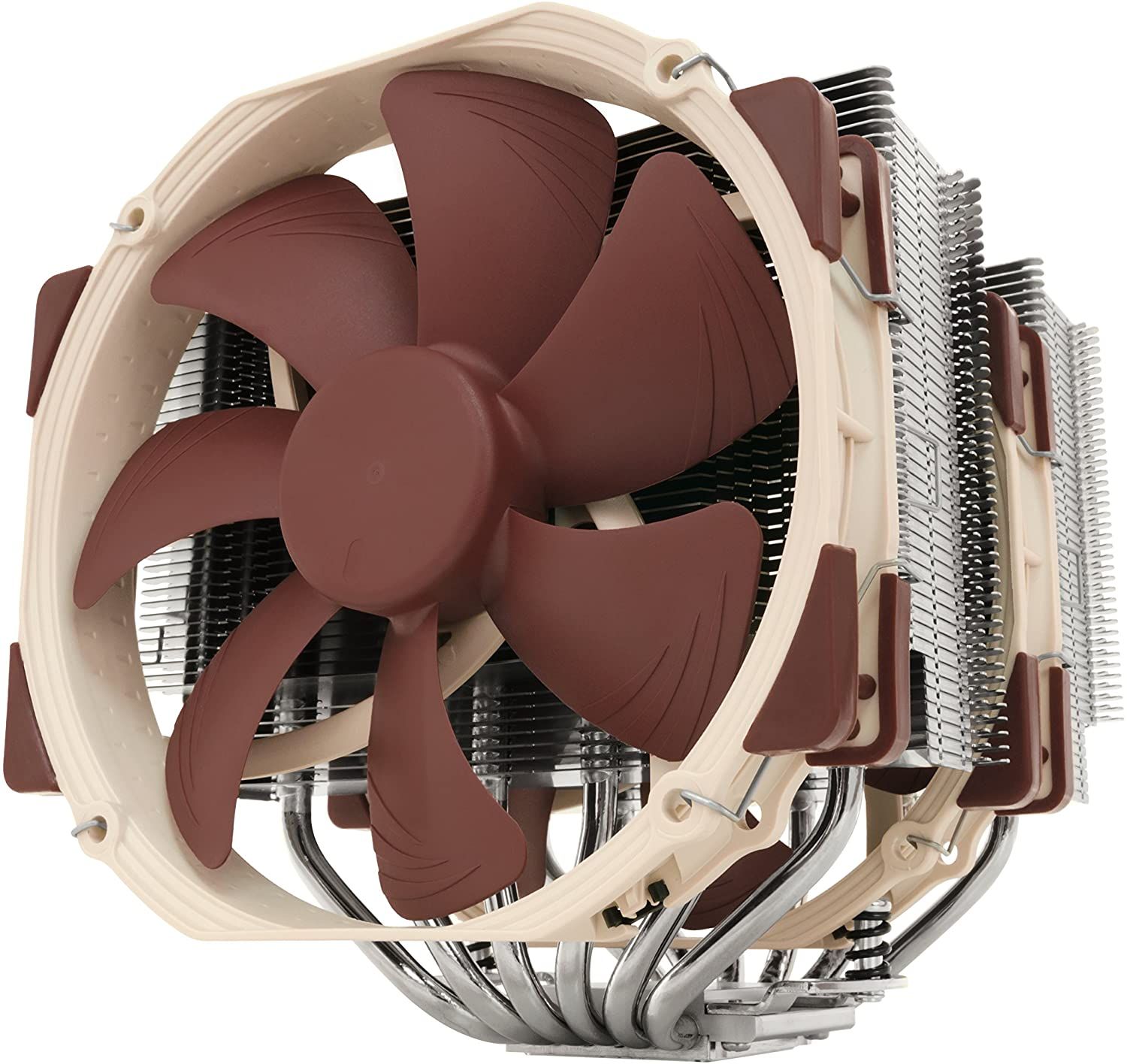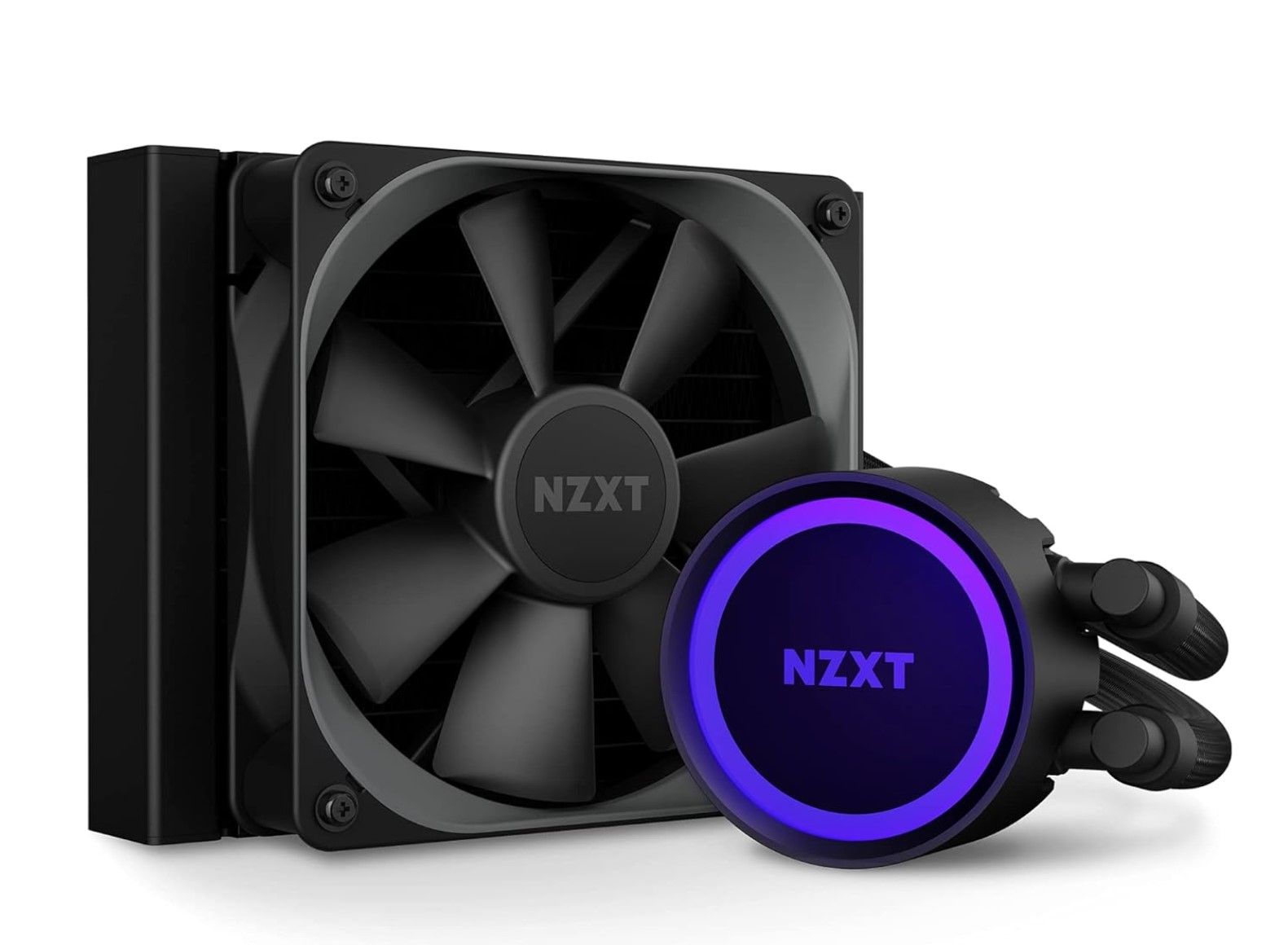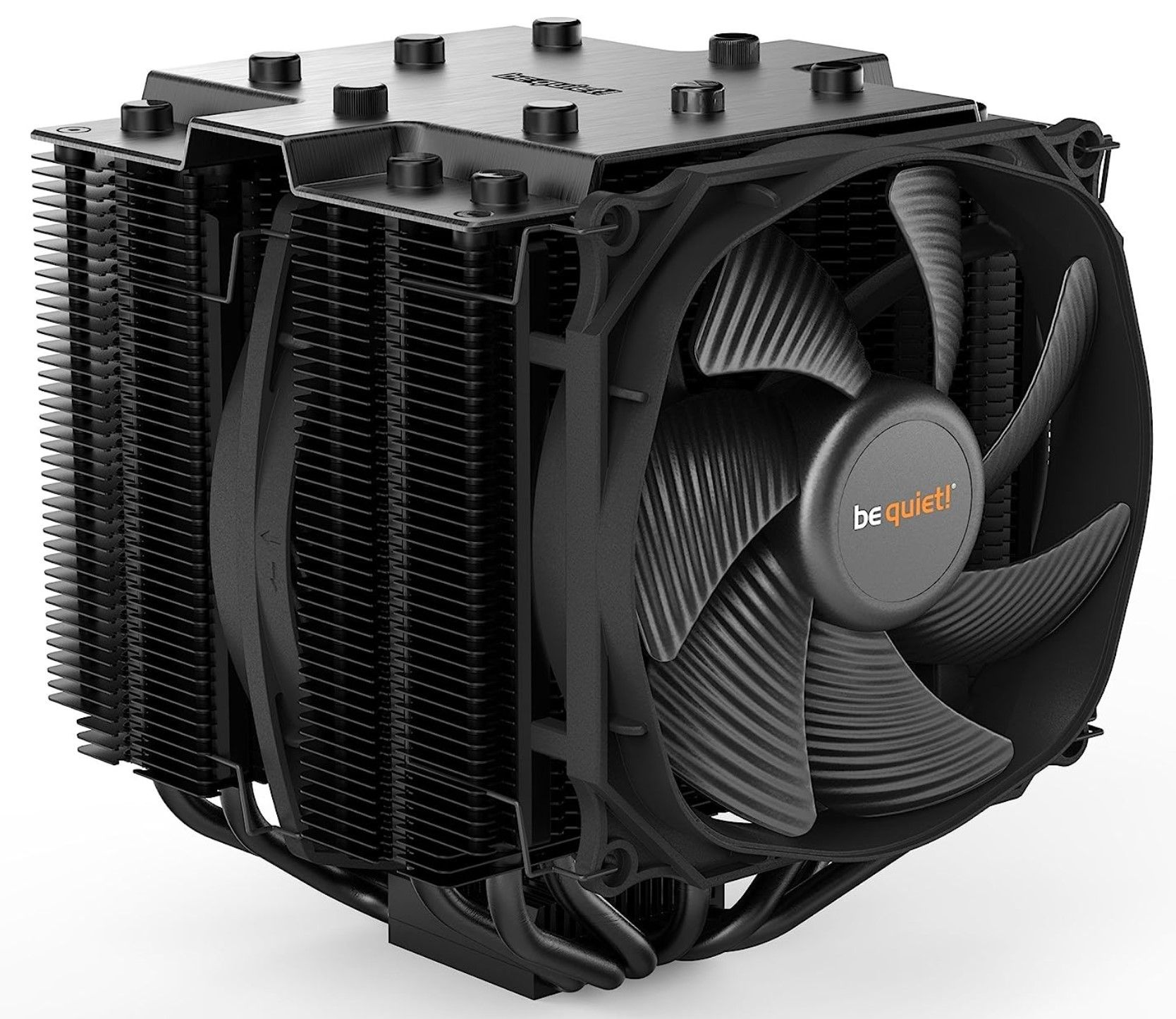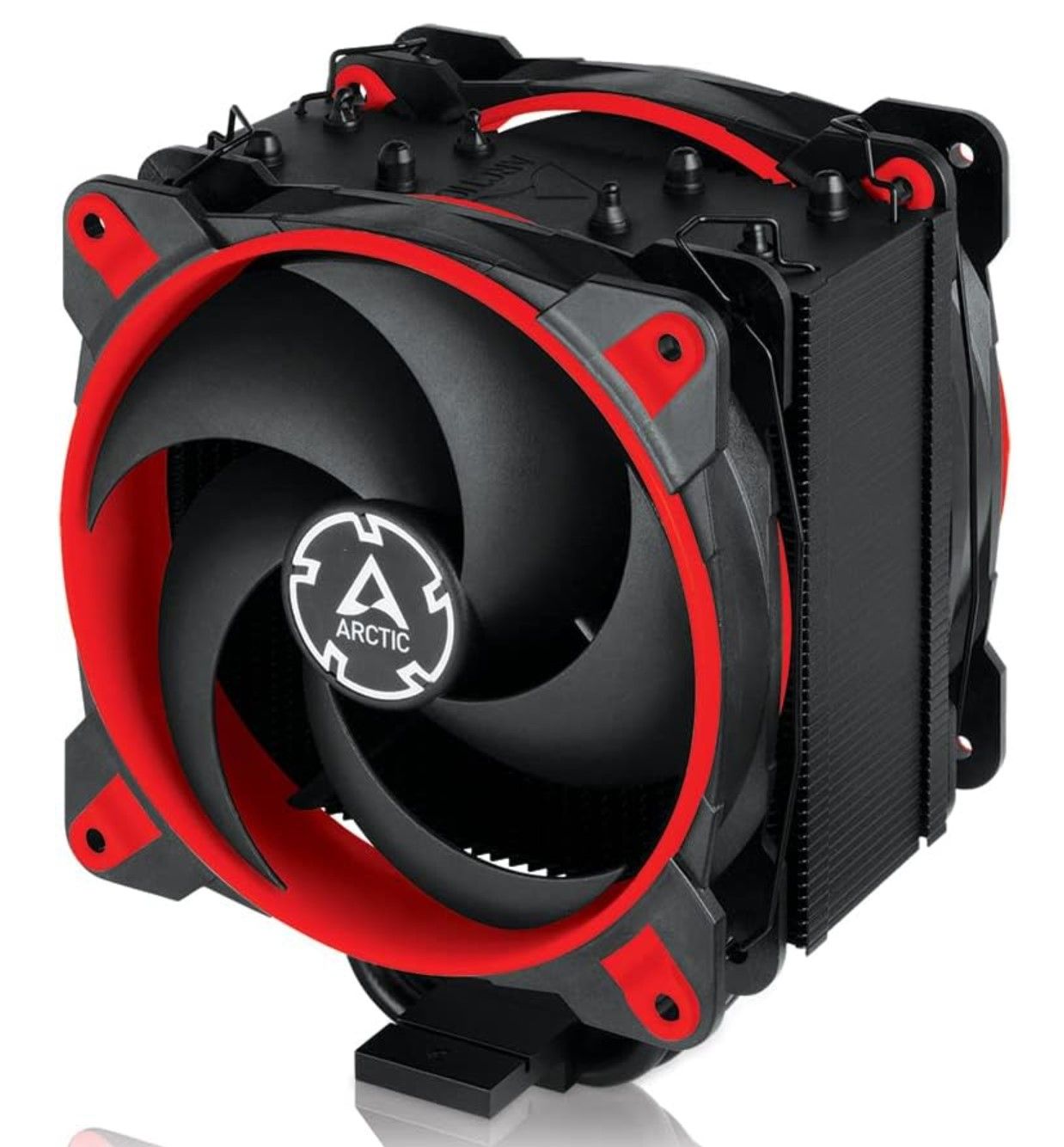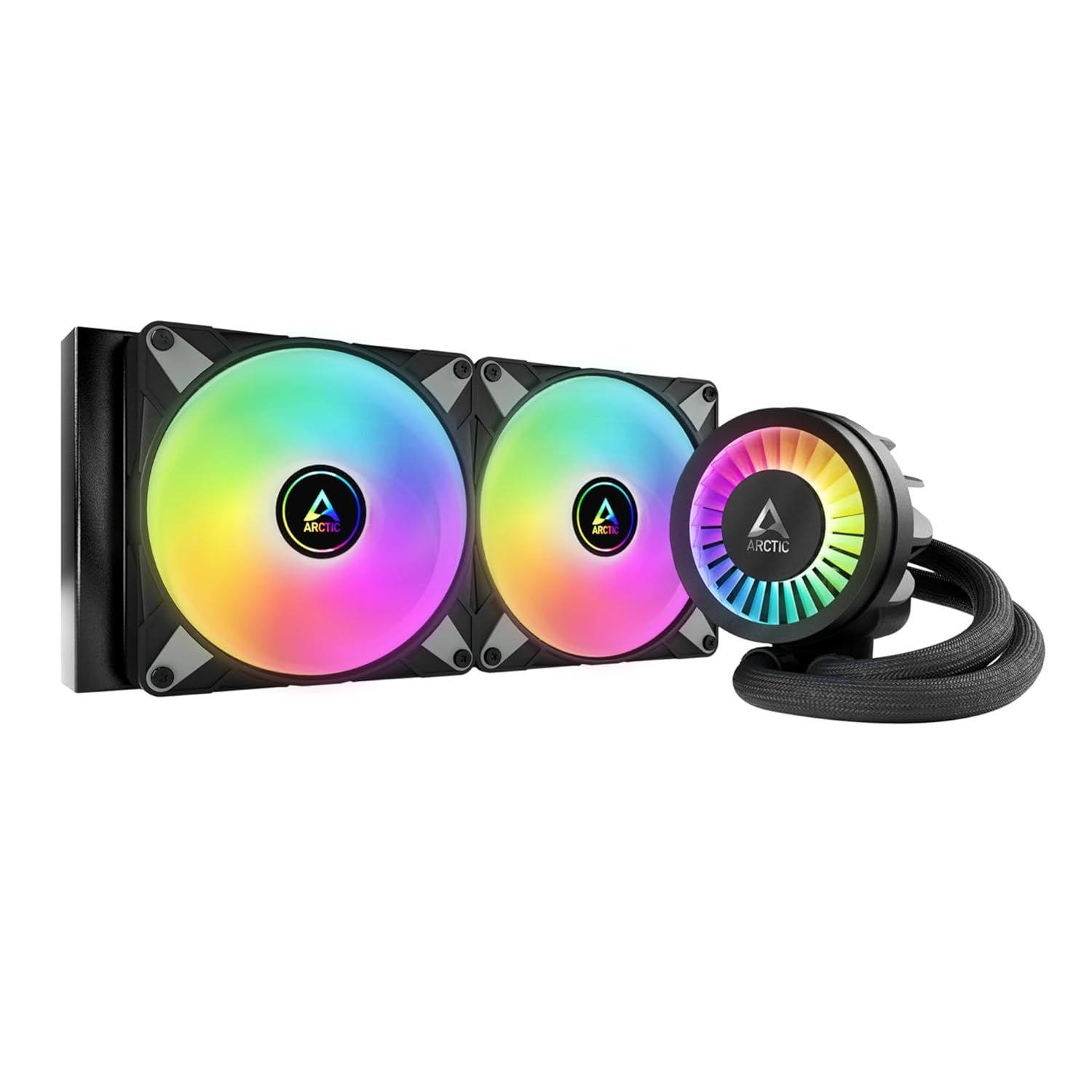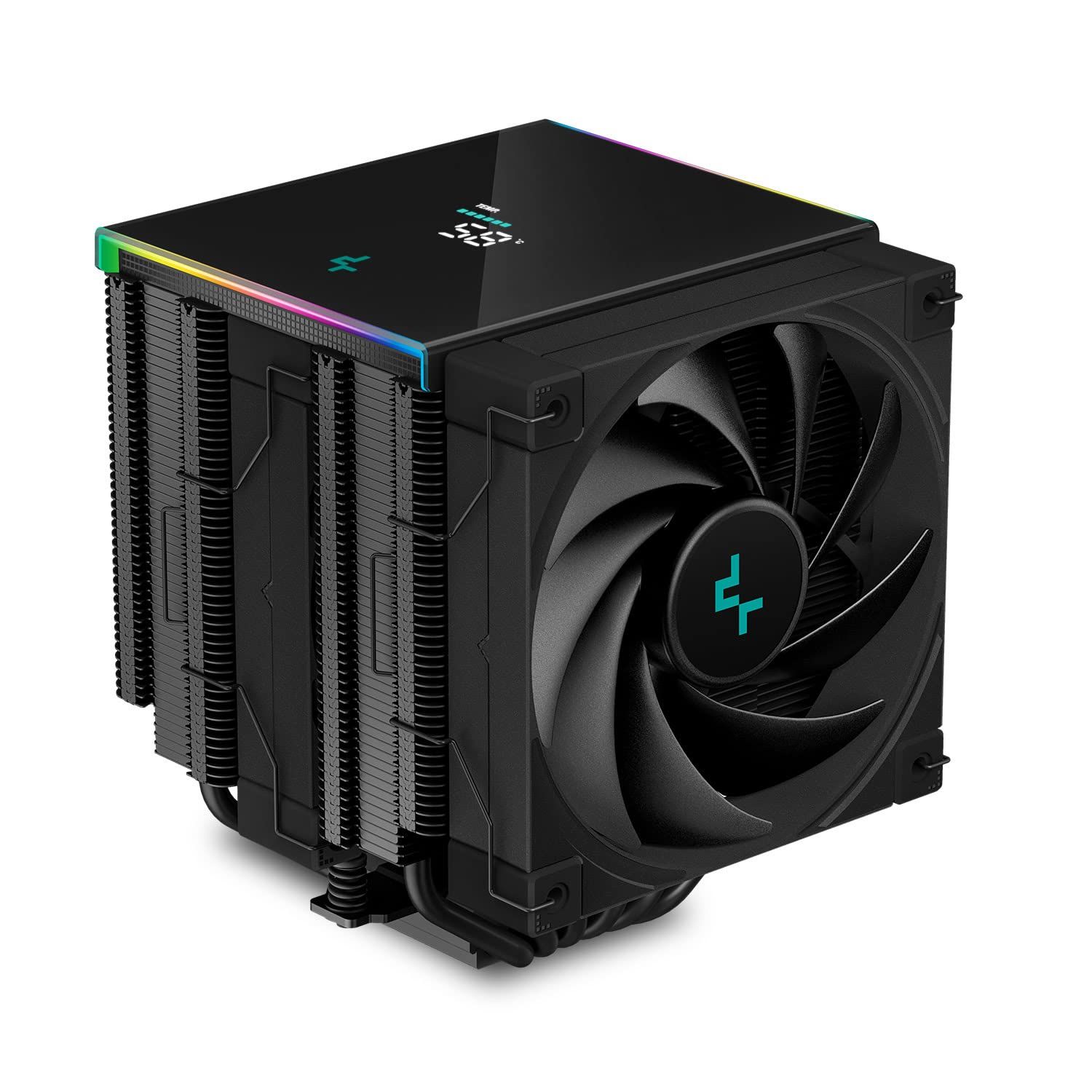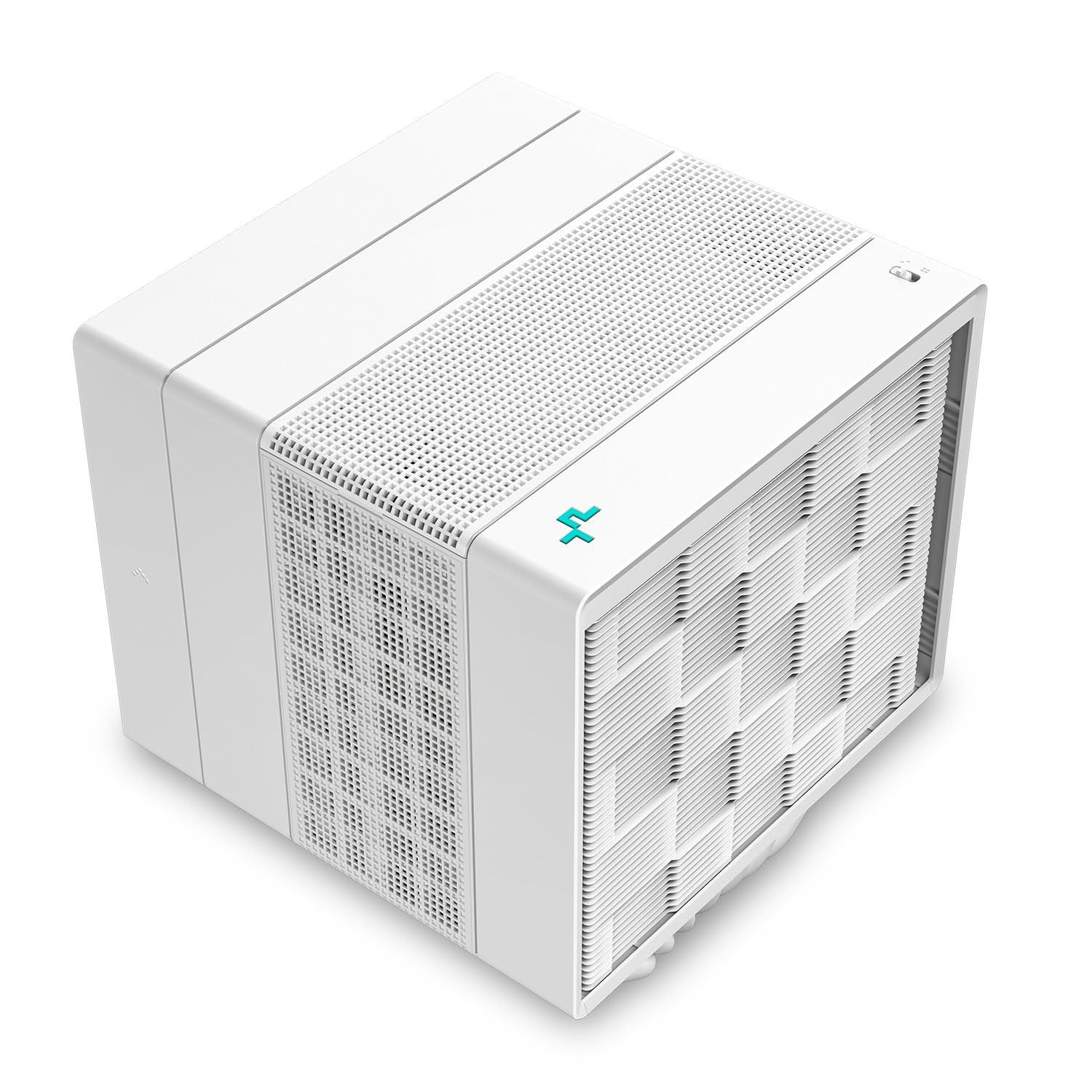Gamers who have an efficient and powerful PC, or those who want a build that overclocks impressively and is silent even under heavy load, require an effective cooling system. Most modern CPUs, including AMD's 7000 series and Intel's 13th and 14th-generation CPUs, continue to push thermal boundaries when they perform various sophisticated tasks such as multitasking, rendering, and gaming. To ensure that the processor does not overheat and lead to throttling, damage, or performance issues, users need a robust CPU cooler.
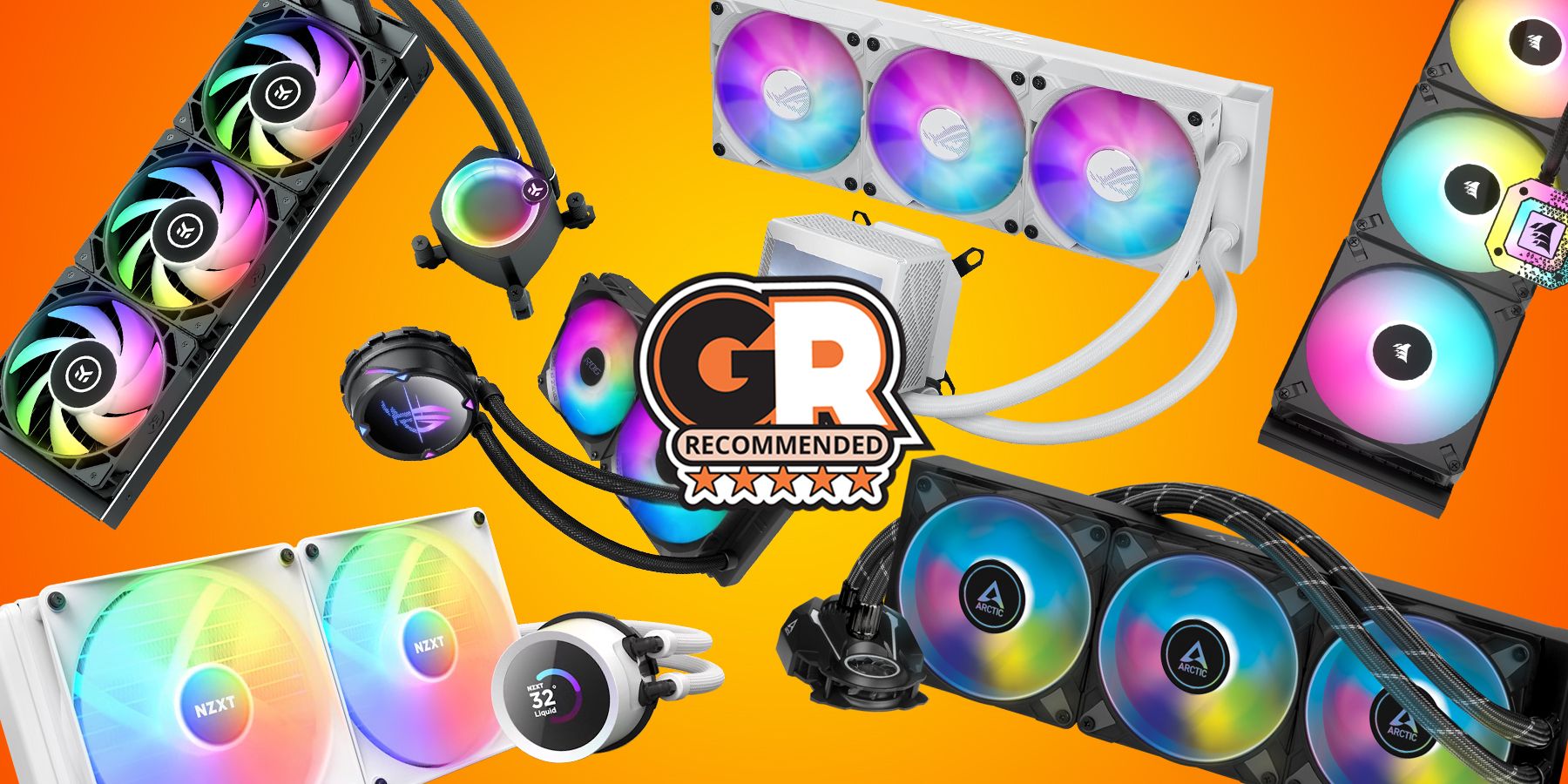
The Best AIO Coolers for 2024
Cooling high-end gaming chips can be a difficult task. With these AIO coolers, say goodbye to high temps and be prepared for great performance.
The right CPU cooler for a rig can make a considerable difference in a system’s noise and temperature. Also, in some high-end builds, it can deliver robust performances by keeping the boost clocks for extended periods. So which is the best CPU cooler? That depends on various factors such as price, aesthetics, compatibility, size, and noise level.
Things to Consider for Choosing a CPU Cooler
There are a few factors that buyers should consider when purchasing a CPU cooler. They include:
- Compatibility: Each time a new generation of Intel or AMD processors arrives, it forces CPU coolers to adapt to different mounting components. Ensure that any potential CPU cooler has updated its accessories to handle the shifting dimensions of CPU sockets.
- Cooling Method: The most popular form of CPU cooling is air cooling, which relies on a combination of fans and heat sinks to dissipate heat from processors. Even so, liquid cooling, a quiet and effective way to control overclocked CPU temps, has become more affordable in recent years. Finally, passive air cooling has limitations but ditches all fans and exclusively uses a heatsink, making it ideal for completely silent builds.
- Overclocking: The coolers that ship with many Intel and AMD CPUs are adequate for controlling the temperatures of these processors at stock settings. Once a gamer decides to overclock a CPU, a more powerful cooler is necessary to deal with the added heat generated by a processor. Some coolers enable users to push their CPUs to their breaking point, while others can only handle light to moderate overclocking.
- Noise Level: Manufacturers often rate the noise levels of their coolers in decibels, though exact numbers depend on specific builds and testing environments. Regardless, certain CPU coolers produce more audible noise than others, with cooling performance not always corresponding to noise levels.
Game ZXC's Picks for the Best CPU Coolers in 2024
AIO liquid cooling is now even more necessary when the market is filled with high-end processors such as Ryzen 9 7950X or Intel Core i9 14900K. 360mm AIOs are generally the best for these chips as they bring a larger radiator that provides more aluminum fins to dissipate the heat faster. After analyzing countless AIO coolers with different radiator sizes, it is found that the Arctic Liquid Freezer III 360 A-RGB has no competition. The Liquid Freezer III replaces the Freezer II series with an improved design that helps in achieving better thermals.
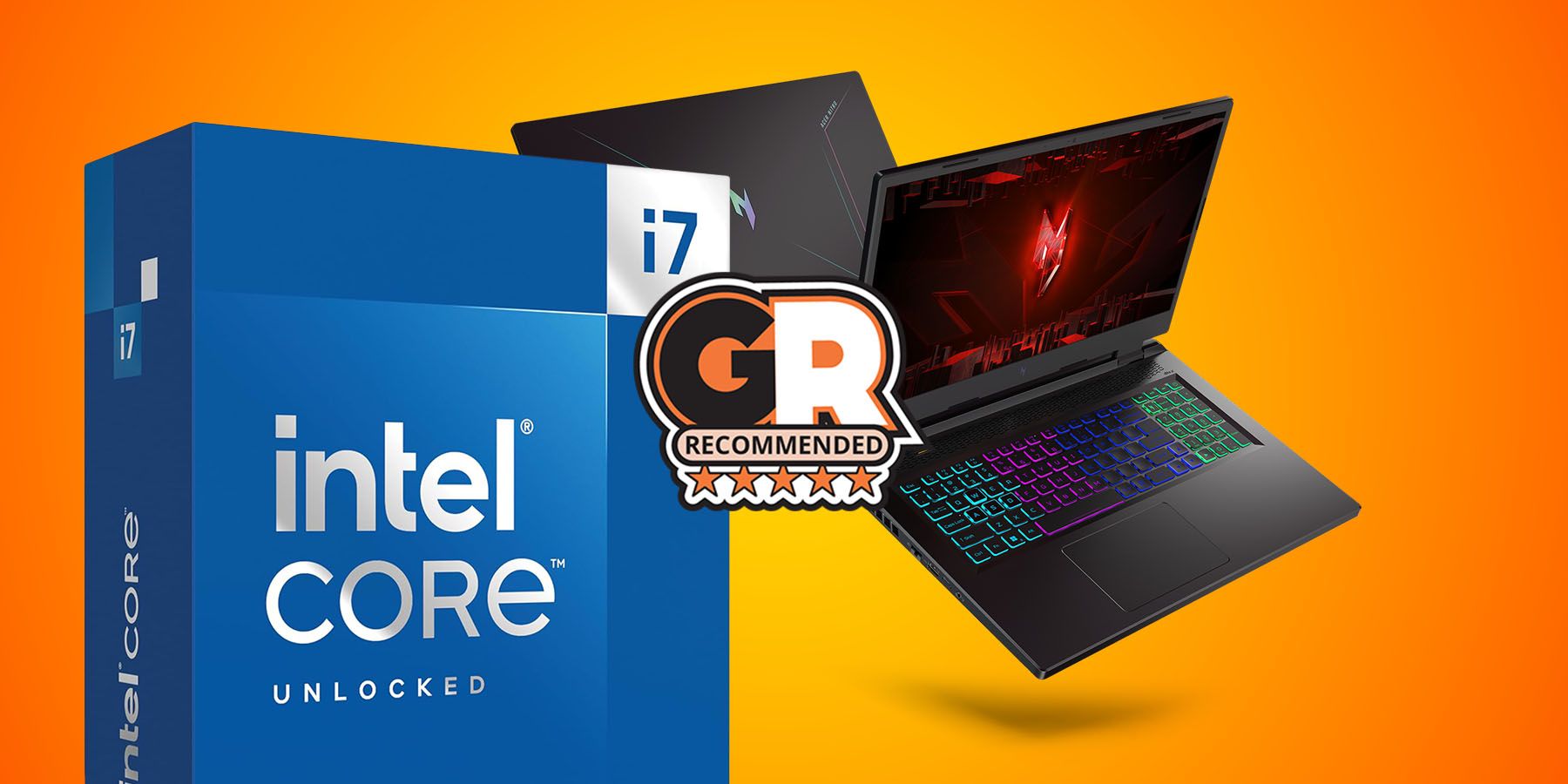
Laptops with the Best CPUs for 2024
Laptop CPUs determine how smoothly a laptop performs. This guide highlights laptops with the best CPUs for 2024.
This 360mm edition is fully compatible with the latest Intel and AMD platforms and also comes with dedicated contact frames to make better contact with the CPUs. These are far better than the stock ones and apply a good amount of pressure in the middle of the chip. Except for the cooler's slightly noisier operation compared to its predecessor, its cooling performance outperforms every other 360mm AIO. This is achieved through its upgraded design that includes a better VRM fan and high-speed P12 PWM PST A-RGB fans that not only have good static pressure but also boast beautiful A-RGB lighting.
The Noctua NH-D15 is a best-in-class contender among CPU air coolers and is the successor to the popular NH-D14. It has huge shoes to fill but meets the challenge with a no-frills approach to thermal performance. Coming in the standard Noctua brown color (it does sell in a different black theme to match the majority of PC cases), the NH-D15 dominates most of the tests one can throw at it. Thanks to its heat-pipe tower structure, the cooler delivers stellar cooling performance with two powerful, silent fans.
The NH-D15 comes with an excellent Noctua NT-H1 thermal paste and low-noise adapters. This Noctua cooler also discards any attempts to push RGB or ARGB support, which is quite popular with most people assembling a gaming PC. Note that if a buyer goes for this cooler, check its size specifications. It's larger than it looks in the pictures, and some mid-tower cases take liberties with the amount of space they offer. Still, provided that it fits in a case, the Noctua NH-D15 quietly outputs a jet stream of air that ranks it as the overall best CPU cooler.
Water cooling systems were once viewed as expensive and complicated contraptions only for the most experienced enthusiasts. AIO liquid coolers have become more affordable and have been downsized to function in the most compact gaming setups. The NZXT Kraken 120 takes this concept to the extreme with a single 120 mm fan and a small circular cooling block.
The Kraken 120 isn't the only compact liquid cooler on the market, but it has a unique design with a pump located directly on a radiator. This clears even more space around the block and the CPU in cramped configurations and has a minimal impact on fan performance. Making the most out of its one fan, the Kraken's blower produces enough air to control the temperatures of the latest CPUs, but high overclocks may test its limits. The fan and pump noise stays controlled thanks to ball bearings and high-quality materials used throughout the Kraken 120.
With ARGB effects on its CPU block, there is just enough lighting to make buyers think they are running a higher-end liquid cooler. However, while the NZXT logo is illuminated and surrounded by a light ring, the attached fan stays dark. Buyers with a compatible NZXT motherboard or fan/lighting controller can adjust ARGB settings in the CAM software. NZXT's app is attractive and simple to navigate, but it is more for monitoring systems since it's unable to control fan speeds.
The Kraken 120 won't replace the most powerful 360 mm liquid coolers, but it's a solution to cool excessively hot CPUs while taking up less space than some bulky air coolers.
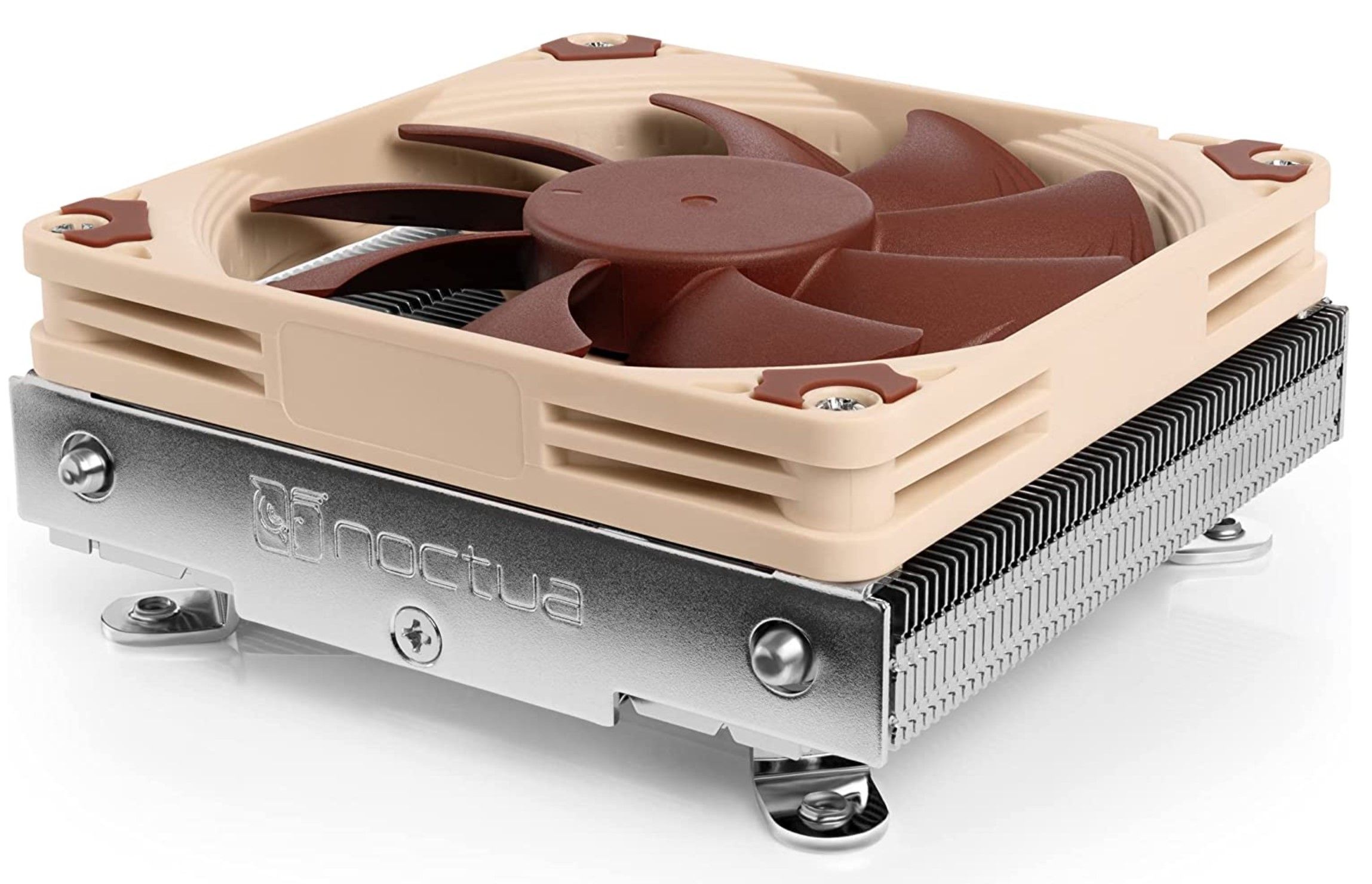
Noctua NH-L9i
The Noctua NH-L9i is the ideal air CPU cooler for HTPC or small form factor PC builds. The NH-L9i stands at a height of only 37mm and yet its 2500 RPM fan outputs enough airflow to cool LGA115x and AMD 4 series processors. The NH-L9i is an excellent choice for Mini ITX motherboards, designed not to block other components even with limited space to work with.
- Brand
- Noctua
- Cooling Method
- Air
- Integrated Lighting
- No
- Noise Level
- 23.6 db
- Fan Speed
- 2500 rpm
- Compact design
- Minimal fan noise
- No clearance issues, even with tiny motherboards
- Not a good choice for overclocking
When it comes to air cooling solutions, it's hard to go wrong with a Noctua product, like GameZXC's best overall choice, the NH-D15. But when a gamer is building in a smaller case, the NH-D15 can be a problem. That is where the NH-L9i comes in. This little CPU cooler measures in at an incredibly small 95 mm x 95 mm x 37 mm, making it super easy to fit in any case while still getting excellent cooling performance. If a buyer is not a fan of the ubiquitous brown-on-tan color scheme that Noctua has, this cooler also comes in an all-black variant as well.

Best Budget Gaming Intel CPUs in 2024
PC gaming can be a costly hobby, but some of Intel's latest gaming-centric CPUs can get gamers doing more for less when it comes to performance!
Regardless of the build, the NH-L9i should fit in easily with any RAM size or if a GPU is a quad-slot monster. However, if a buyer is working inside a compact PC, chances are that the installer is not using one of these GPUs anyway. Unlike most CPU coolers, Noctua makes installing coolers a simple process. There is no finicky bracket, just four screws which makes it incredibly easy. Just make sure to use a diagonal screw pattern to place even pressure onto the cooler and CPU.
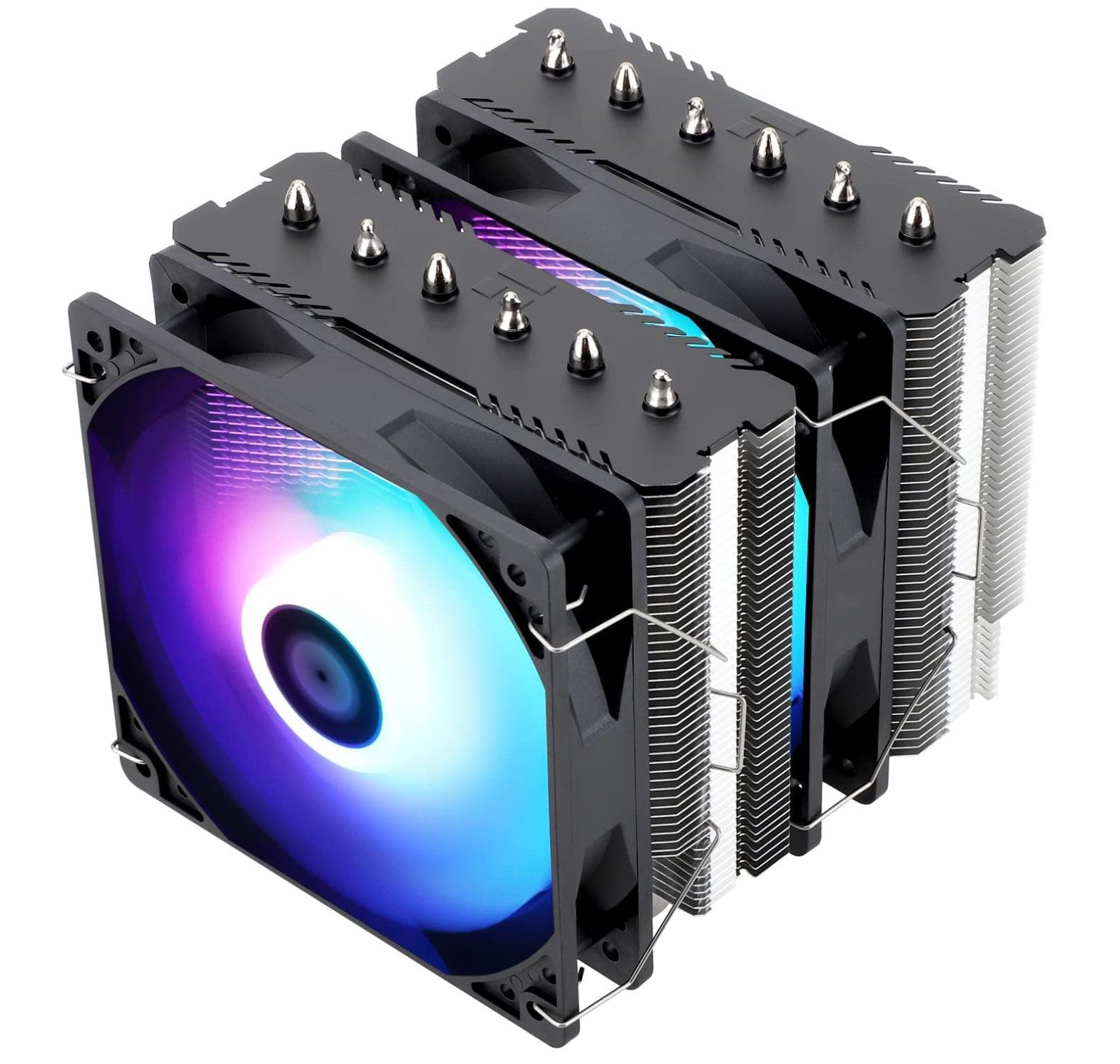
Thermaltake Peerless Assassin 120 SE CPU Cooler
The Thermaltake Peerless Assassin 120 SE dual-fan CPU cooler offers incredible performance with minimal noise at a budget price. Each fan operates at 1550 rpm to produce an airflow of 66.17 CFM at a noise level of just 25.6 db. The 6 heat pipe CPU cooler is compatible with Intel 115X/1200/1700/17XX and AMD AM4/AM5 chip sockets. An RGB version of the Thermaltake Peerless Assassin 120 SE is also available.
- Brand
- Thermaltake
- Cooling Method
- Air
- Integrated Lighting
- Available
- Noise Level
- 25.6 db
- Fan Speed
- 1550 rpm
- Excellent value considering its airflow
- Simple installation despite massive size
- Solid build quality
- Somewhat noisy
- Some versions difficult to find in stock
For newcomers to PC building, how even a relatively simple air cooler works can cause some confusion. Still, some concepts are just common sense, like the fact that two fans or two cooling towers can provide more effective cooling than just one. A dual-tower, dual-fan air cooler like the Thermaltake Peerless Assassin 120 takes up considerable space on a motherboard but can rival the cooling performance of even some liquid coolers. Even better, the Peerless Assassin 120 is very competitively priced and comes in several colors and ARGB fan variations.
With the Peerless Assassin 120, Thermaltake didn't just take a conventional single-fan air cooler design and multiply it by a factor of two. The cooler sports six antigravity heat pipes, allowing it to cool CPUs effectively, regardless of their orientation in a PC case. When designing coolers of this size, special attention must be given to the possibility of blocking memory slots and other vital motherboard components. Thermaltake confirms a memory clearance of 46 mm in most standard configurations, enough to accommodate most sticks. However, with two fans, one will likely have to sit directly on top of the memory, though it's easily removed from the heat sink with some metal clips.
Adding two CPU fans to the mix may seem unappealing to gamers concerned about noise levels. Fortunately, the 1550 RPM TL-C12 fans included with the Peerless Assassin 120 benefit from S-FDB bearings that both reduce vibrations and improve the longevity of the cooling system. Maximum noise levels remain at 25.6 dB, which isn't groundbreaking but is superior to even some single-fan coolers. The overall cooling performance of the Peerless Assassin 120 is impressive, to say the least, producing enough airflow to keep even the temps of many overclocked CPUs in check.
Despite its affordability, Thermaltake did not skimp on the build quality of the rock-solid Peerless Assassin 120. The cooler also takes advantage of an installation process that makes it simpler to affix the heatsink to motherboards with optimal mounting pressure. For gamers looking for maximum performance without leaping into the world of AIO liquid coolers, the Peerless Assassin 120 is the best CPU air cooler available.
Liquid cooling isn't the only option when gamers desire a quieter setting to concentrate on performing their best. The dual fan and dual tower be quiet! Dark Rock Pro 4 defies conventional thinking with a pair of fans that produce less noise than many single-fan air coolers. Typically, dual fan coolers utilize two identical fans, but the Dark Rock Pro 4 relies on a front 120 mm Silent Wings 3 fan, while the fan in between the towers is slightly larger at 135 mm. The more compact front fan allows for additional memory clearance for DDR4/DDR5 sticks and sports a funnel-inspired frame to send as much air through the heatsink as possible.
Performance levels ultimately make or break a CPU cooler, and thankfully, the Dark Rock Pro 4 doesn't disappoint. Still, buyers can find equally performing alternatives for less money, so the value of this be quiet! is more with its remarkably silent noise levels. With the fans blasting at their maximum levels to cool powerful overclocked CPUs, the Dark Rock Pro 4 destroys most of its competition by producing only modestly higher noise levels than the advertised 24.3Db(a) spec.
Another area where Dark Rock Pro 4 excels is with its rock-solid build quality. The 2.5-pound cooler is quite massive, especially when combined with the high-quality brackets, screws, and bolts that are included in its packaging. Installation can be a bit tricky with an air cooler of this size, but the manufacturer bundles a screwdriver of just the right height to secure the middle fan in between the heatsink. Unfortunately, while be quiet! employs a cutout design to clear most RAM, the cooler's sheer size will often require removing the front fan and its brackets to access all memory slots.
Be quiet! traditionally opts for an all-black aesthetic instead of RGB lighting, and that's the case with the Dark Rock Pro 4. The company didn't cut any corners with the dark theme, with virtually every part of the cooler being a matte black, including the heatsink's brushed aluminum top cover. Some buyers may prefer some other color options, but the idea of this near-silent air cooler is not to be seen or heard.
As a result of top-notch build quality and impressive cooling performance generating minimal noise, the Dark Rock Pro 4 is one of the best CPU coolers available.
Few manufacturers directly market CPU coolers to competitive gamers, but the Arctic Freezer 34 Esports Duo aims to enhance the hardware these pros rely on. If buyers are searching for a cooler that can match their favorite esports team's colors, the Freezer 34 Esports Duo will suit them with various styles. Arctic's cooler has a dual fan single tower design that produces enough airflow to cool many overclocked CPUs without generating excess noise.
With the Freezer 34 Esports Duo, a pair of BioniX P-fans surround the 54-fin heat sink in a proven push-pull configuration. The front fan forces cool air against the heat sink with tremendous static pressure. Then, the rear fan exhausts heat at a maximum of 2100 RPM. Compared to past Arctic Freezer coolers, the manufacturer's latest fans are optimized for lower power consumption and minimal vibrations. The result is that even at high loads, the Freezer 34 Esports Duo will rarely exceed the 24.3Db(a) noise threshold.
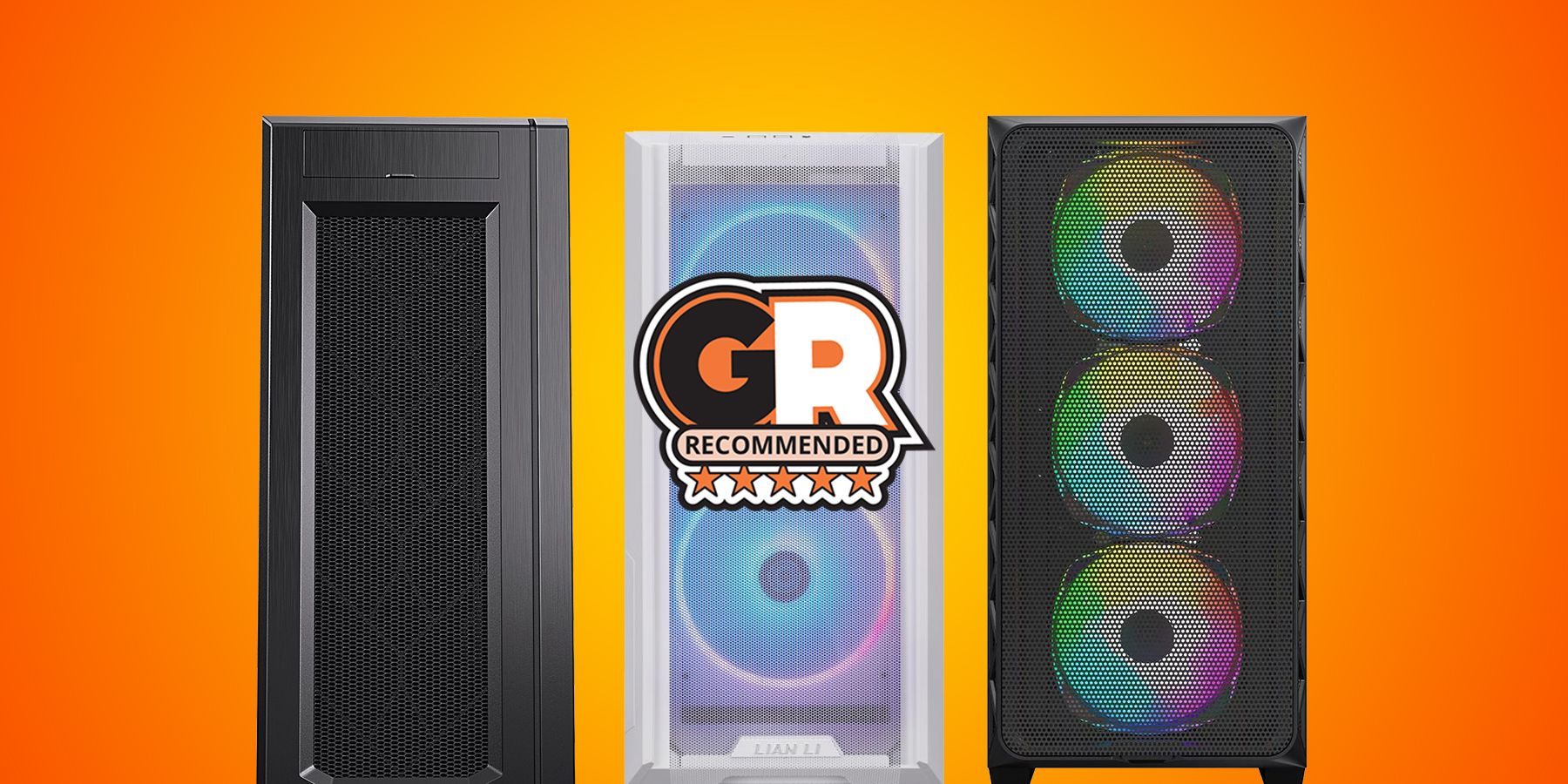
Best Budget PC Cases in 2024
These budget cases are great options for first-time PC builders with attractive styling and future-proof expandability.
Another reason why the Freezer 34 Esports Duo performs so well despite its fairly compact heat sink is its direct-touch heat pipes that attach directly to where the most heat accumulates. Previously limited in what processors the cooler was compatible with, the Freezer 34 Esports Duo now ships with hardware supporting virtually every common CPU on the market. However, while installation is usually quick with a few parts to work with, the manufacturer could improve their packaging to protect all the cooler's components better.
In the end, the Freezer 34 Esports Duo accomplishes its goal of providing enough cooling for esports pros to game at high framerates. Also, it's one of the most affordable air coolers in this guide, ditching fancy RGB effects for stylish color schemes that look spectacular in any gaming rig.
Meet the little brother of the Liquid Freezer III 360-ARGB. This is the 280mm edition that is ideal for mid-range processors but can do pretty well even with higher-end chips. The 280mm radiator might not have a huge surface area, but it's definitely sufficient for optimal cooling. Using dual 140mm P14 PWM PST A-RGB fans, the cooler is close to the 360 edition in cooling performance, thanks to the high airflow of up to 70 cfm, which is highly effective in dissipating the heat from the fins.
The VRM fan is an upgraded one that can go as high as 2500RPM and also brings 12 addressable RGB LEDs. Both the VRM fan and the radiator fans have A-RGBs that can be controlled via Arctic's RGB Control Master. Similarly, the pump, VRM fan, and the fans are controllable to increase/decrease their speed to either have a quieter operation or to achieve better thermals.
The Liquid Freezer II 280 was already a beast, but the LF III 280 takes one step ahead in both cooling and aesthetics. With the pre-included Intel and AMD contact frames, the cooler base now sits comfortably on the CPU, making better contact. However, there is still room for improvement. One of the selling points of both the 360mm and the 280mm editions is their pricing. While the 360mm comes for a price slightly higher than $100, the 280mm comes under $100, which makes it a bargain.
CPU Coolers have come a long way from basic silverish single towers to beautifully RGB-lit dual towers. CPU coolers are perhaps one of the most visible parts inside a chassis with a big transparent side panel and hence, many go straight for an aesthetically pleasing one to show off to their friends. With RGB LED coolers being pretty common these days, they offer nothing unique in appearance, especially when every other PC component/peripheral features RGB LEDs.
The Deepcool AK620 Digital is different. The AK620 is available in two different editions: One with no digital display and one with a big screen that displays the real-time status of the CPU. This beautifully lit display can show the CPU temperature in Celcius and Fahrenheit, can give critical temperature warnings, and can also show the current CPU usage in percentage. The display is built on the top cover that sits on the CPU cooler and also features dual RGB LED strips on two sides to further enhance its looks.
Appearance aside, the AK620 is actually on par with the best high-end air coolers, including the Noctua NH-D15S. This is achieved through its formidable design that incorporates dual aluminum towers with six advanced copper heat pipes that go through the copper cold plate for maximum heat dissipation. With two 120mm high airflow fans, the cooler is able to introduce an effective push-pull configuration and can be adjusted to make clearance for the RAM modules.
Anyone who has used Deepcool's Assassin CPU coolers in the past would understand why this series is the company's best-ever thermal solution. Not only the Assassin IV is ideal for enthusiast overclockers, but it also looks dazzling with its all-white color theme. Users with a white-themed build will love this CPU cooler for its unique design that incorporates a shell designed for high airflow. The shell hides the fans from visibility but doesn't hinder its performance.
The Assassin IV is available in black and white editions, and it's hard not to get mesmerized by the white one as it looks too good inside a PC case. The cooler features a dual-tower design with two high-performance fans of different sizes. To make sure that the cooler provides an unobstructed path for the RAM sticks or the I/O shroud, the 120mm is relocatable. The fan can be pushed upwards to make clearance underneath.

The Best White PC Cases in 2024
White gaming setups are all the rage these days and it all starts with a white PC case. Here’s a handy guide to help find the right one.
Performance-wise, the cooler is slightly behind the NH-D15 in cooling and is fairly silent. With a dedicated mode selector on its shroud, users can switch to either Performance or Silent mode according to their needs. This is essentially one of the most handy features a cooler can have, but one primary reason why it may send away some users is its compatibility with some of the latest LGA 1700 motherboards. Nonetheless, it is perfectly compatible with AMD platforms and will provide satisfactory performance, all wrapped in an elegant white design.
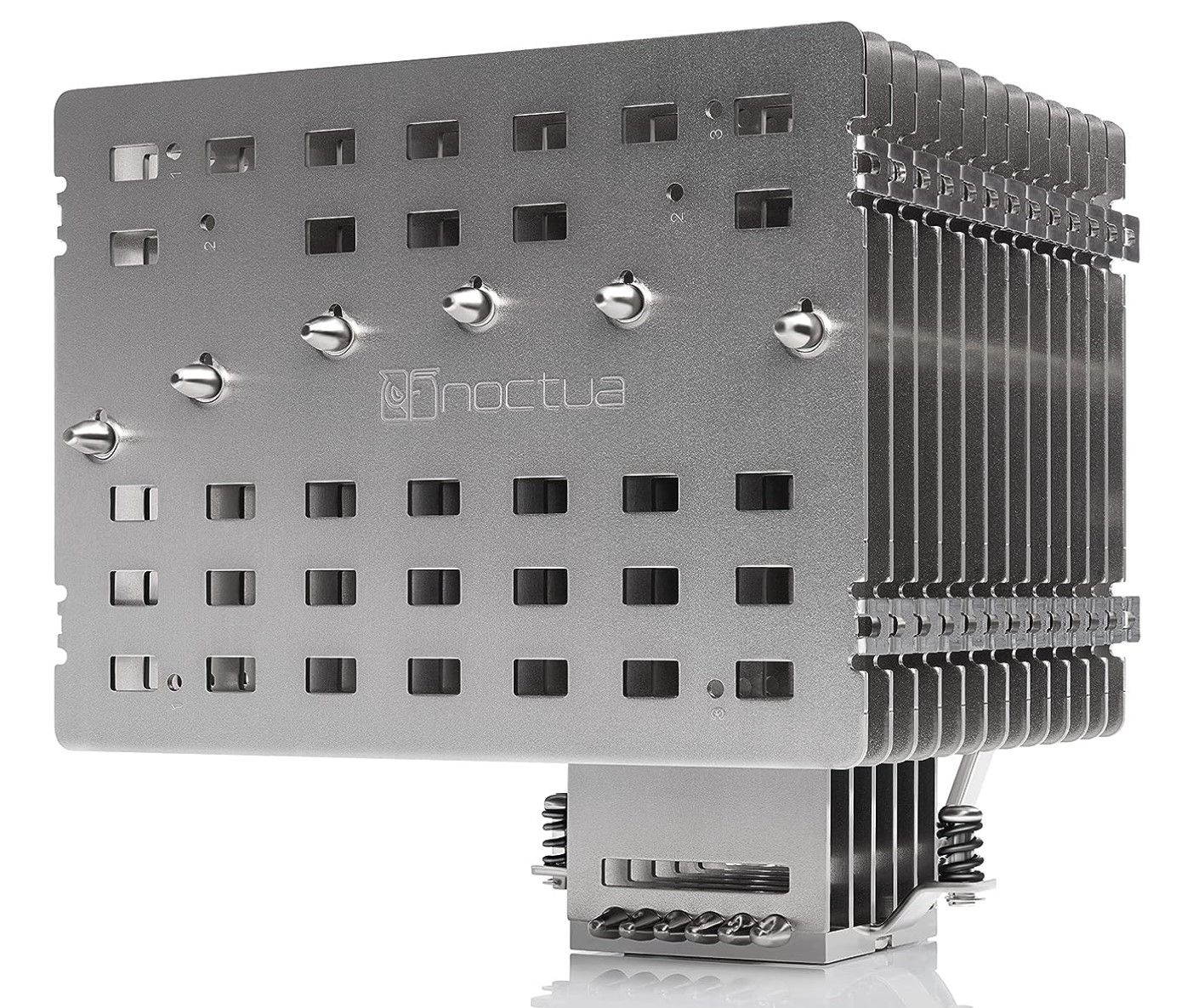
Noctua NH-P1
The Noctua NH-P1 takes on the difficult task of completely silent and fanless PC cooling and manages to exceed expectations. This passive cooler utilizes six heatpipes and extra large and spaced-out heatsink fins for maximum heat dissipation. Thanks to its asymmetric design and layout, the NH-P1 will not block memory modules on many motherboards or interfere with PCIe slots. The end result is effective passive cooling that can handle high-end CPUs at stock settings, without the noise or the dust accumulation that plagues active air CPU cooling systems.
- Brand
- Noctua
- Cooling Method
- Passive
- Integrated Lighting
- No
- Fan Speed
- N/A
- Completely noise-free
- No fans that collect dust
- Outstanding build quality
- Not intended for overlocked CPUs
- Huge heatsink may pose compatibility issues
Admittedly, passive CPU coolers aren't popular with most gamers or system builders. Unlike active air coolers with fans, the Noctua NH-P1 uses no fans, relying entirely on its extra-large heatsink. The benefits of this approach are obvious: offering silence rather than a potentially disturbing fan that can interrupt games and collect dust. Regardless, passive CPU coolers only make sense in cases that promote ample natural airflow with minimal or no fans. Also, while overclocking a CPU with the Noctua NH-P1 is not wise, the cooler can keep some of the latest CPUs running with stock settings at safe temperatures.
There are some rather large air CPU coolers on the market, but they still can't match the size of the Noctua NH-P. Obviously, the lack of fans means that the heatsink has to do most of the work to dissipate CPU temperatures. As a result, the heatsink has thick fins on its exterior that are spread out more than normal to exceed the performance of what these components are usually capable of.
Buyers may think that the gigantic Noctua NH-P1 is sure to block memory or PCIe slots on their motherboards, but because of its asymmetrical design, the heatsink's fins are set toward the top of a board. This layout also minimizes the chances of memory sticks being too tall to nestle underneath the cooler. Even so, potential buyers should check out the motherboard and CPU compatibility lists at Noctua's website to avoid disappointment.
Fans aren't completely barred from use with the Noctua NH-P1. The manufacturer suggests that quiet 120 mm fans can be attached to the cooler and then be configured to spin only when CPU temperatures reach near dangerous levels. This approach may ruin the appearance of a completely fan-less build, but it's a compromise that allows users to stress their CPUs more than what is normally possible with passive cooling.
The silent Noctua NH-P1 is undoubtedly more of a niche cooling solution but can come close to matching the performance of lower-powered air coolers. For any buyer striving for a legitimate stealth build, its considerable expense seems more reasonable, thanks to Noctua's remarkable build quality and reputation for durability.
How To Pick The Right CPU Cooler
Unlike some PC components, there is a fairly straightforward process for picking a CPU cooler. Ultimately, it comes down to a handful of considerations.
Compatibility
Thanks to modern engineering, most CPU coolers can adapt to the performance requirements of the latest processors. The Noctua NH-D15 was chosen as GameZXC's best CPU cooler partly because it accommodates nearly every processor on the market. For buyers concerned about a large heatsink blocking their memory slots, the Noctua NH-D15 can still effectively cool CPUs with only one fan.
Cooling Method
CPU coolers employ a variety of methods to control the temperatures of power-hungry processors. Air coolers operate using fans in conjunction with heatsinks to dissipate heat generated around a CPU socket. The most potent air coolers, like the Thermalright Peerless Assassin 120, utilize a dual fan and dual tower heatsink design to output a tremendous airflow.
AIO liquid coolers such as the Arctic Liquid Freezer III 360 A-RGB take a different approach to limit the amount of heat a CPU generates. A water block positioned on a CPU socket, a water pump, and a radiator continuously move cool liquid over a CPU while sending the heated liquid toward a radiator with fans to dissipate the heat. Budget buyers aren't shut out from the water cooling world either, with NZXT Kraken 120 offering surprisingly capable performance with just a single fan.
Liquid coolers tend to operate with less noise than air coolers. For those buyers who demand absolute silence in their builds, a passive air cooler like the Noctua NH-P1 may be the answer. The NH-P1 can't match the performance of many air and liquid coolers, but it is an option for buyers looking to run CPUs at stock settings.
Overclocking
After boosting the clock speeds and voltages of CPUs in a BIOS, a PC may not run properly for long without an adequate CPU cooler. A mid-range liquid cooler like the Arctic Liquid Freezer III 280 A-RGB is suitable to see just how much a processor can be overclocked. However, even air CPU coolers, including the Deepcool AK620, can allow for at least moderate overclocking, depending on the specific processor and amount of airflow in a case.
Noise Level
Modern CPU coolers can reduce processor temperatures drastically without causing abundant noise or vibrations. While AIO liquid coolers can operate in stealth mode in a case, the be quiet! Dark Rock Pro 4 is an example of an air cooler that runs just as quietly. The Ninja 5 benefits from a pair of Silent Wings 3 fans that combine to maintain reasonable CPU temperatures without distracting noise.
CPU coolers also differ dramatically in appearance, with some choices matching a black, white, or pink case better than others. All-white enclosures now have a perfect companion in the snow-colored DeepCool Assassin IV WH, providing exceptionally cool and quiet performance.
Whether a buyer is looking for a cooler that can become a focal point of a rig or cool CPUs without attracting attention, there is an ideal candidate discussed in this guide.
FAQ
Q: Is an air cooled or liquid cooled CPU cooler better?
This is a question that will not have a single answer. AIOs are perceived as generally superior overall but good CPU air coolers can do a similar, if not a better job at times. The real question is whether your case can move the heat being pulled away by the CPU air cooler out. That means that a good CPU air cooler might also need help from the case to keep the ambient temperature inside the case lower to work optimally. AIO coolers do not generally have that restriction since they are mounted at the exhaust or intake points of a casing.
Q: Why do some high-end CPU coolers not have RGB?
Because RGB is purely aesthetic and adding or removing it from a CPU cooler does not benefit or degrade performance one way or another. Performance PC parts by companies such as Noctua and BeQuiet! Focus on maximizing their cooling effectiveness with any aesthetic gains being a secondary factor for their coolers. As a result, the approach they go for when it comes to their coolers is less-is-more, and it does work - Asus's earlier version of the Ryujin II sported Noctua fans, backed by popular consumer demand.
Q: Why do I need to purchase cooling products if I have a stock CPU cooler?
The stock CPU fans and heatsinks that ship with many Intel and AMD CPUs are fine for many users. However, if you wish to overclock a CPU, the basic stock coolers may not handle the excessive heat that an overworked processor generates.
Q: What's the best CPU cooling method?
The best cooling option depends on your preferences, with alternatives being air and liquid cooling. Air cooling is affordable and easy to install. Liquid cooling ensures noiseless operation and is suitable for high-end PCs.





